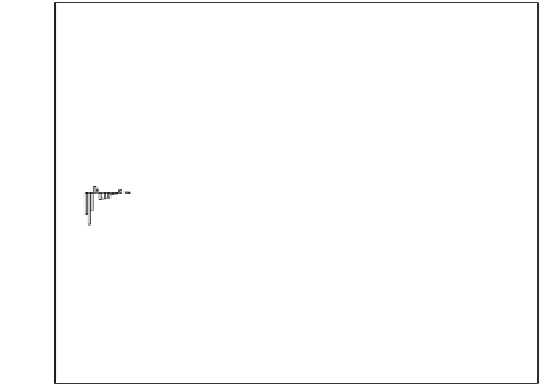Geoscience Reference
In-Depth Information
40
Number of improved baselines
Vienna−APL : 138 (out of 150)
Petrov & Boy : 138
30
20
10
0
−10
−20
−30
−40
0
20
40
60
80
100
120
140
160
Number of Baseline
Fig. 10
Variance reduction power
R
p
of the baseline length residuals after applying the Vienna-
APL (
red
) and the Petrov and Boy (
blue
) model
that is not adequately modeled in the IB corrections. This holds also for stations on a
small island (Kokee Park on Hawaii) and near the coast (RICHMOND, ONSALA60)
where the variance of vertical components is either only slightly improved or dete-
riorated marginally. It can clearly be seen that the biggest improvement is obtained
for mid-latitude, inland sites (WETTZELL, GILCREEK, ALGOPARK, SVETLOE,
HARTRAO), which are subject to the largest atmospheric loading effects.
To assess the improvement in power of the baseline repeatability after applying
the APL corrections, we analyzed the variance reduction power
R
p
(in percent) as:
2
Δσ
R
p
=
apl
×
100%
,
(13)
2
no
σ
−
where positive
R
p
will give an indication of baseline improvement when applying
an APL model. We plot the variance reduction power
R
p
in Fig.
10
. The use of the
Vienna-APL model reduces the variance of the baseline length residuals by as much
as 20% (with the mean variance reduction about 3%) and improves the repeatability
for 85% (127 out of 150) of the baseline lengths. These improvements are similar
those reported by Petrov and Boy (
2004
) (77%, 116 out of 150).
Acknowledgments
We would like to thank the reviewer, Jean-Paul Boy, for checking this part of
the topic and providing very valuable suggestions. We are grateful for the financial support from
the Austrian Science Fund (FWF, P20902-N10).










































































